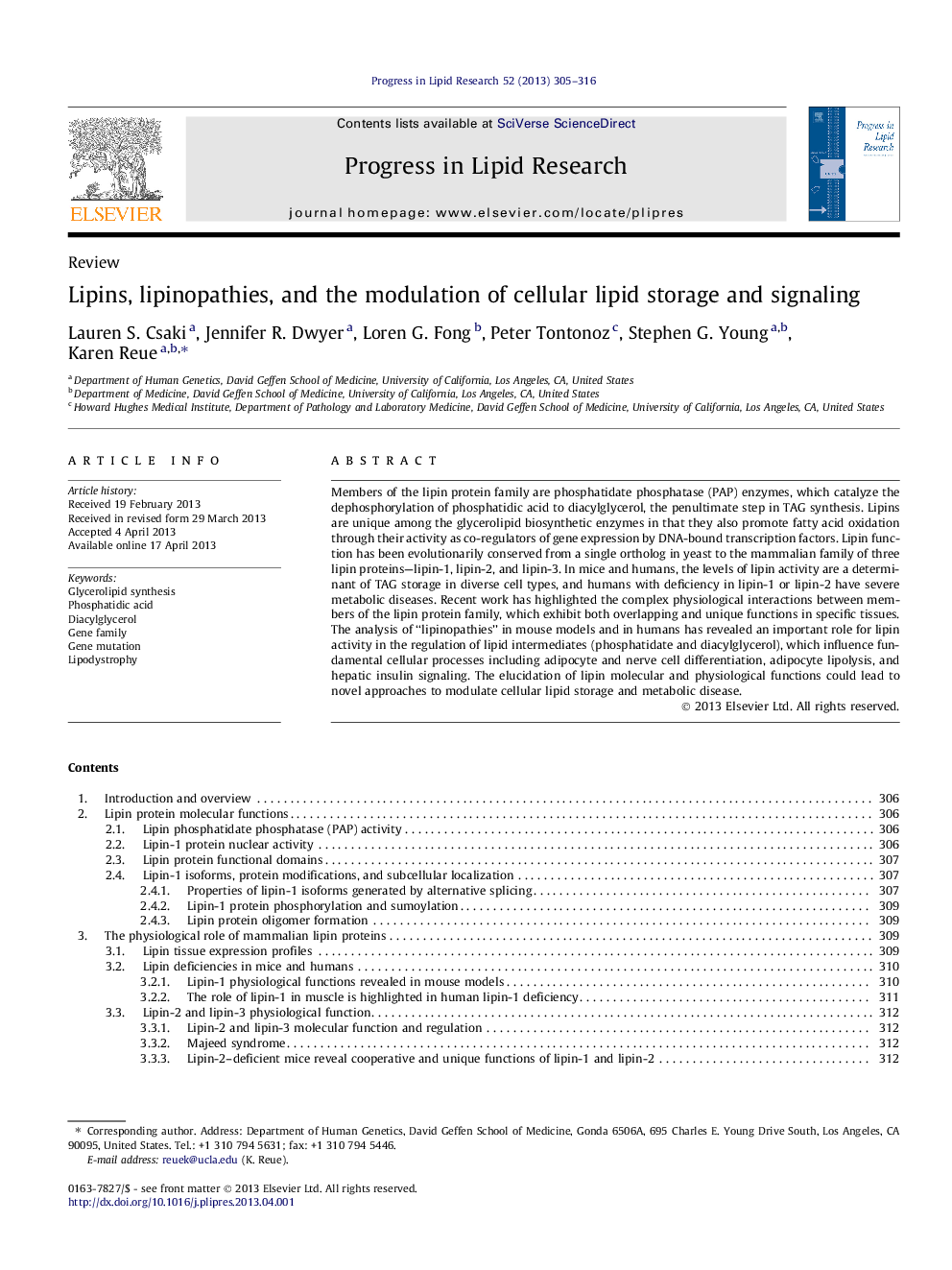| Article ID | Journal | Published Year | Pages | File Type |
|---|---|---|---|---|
| 10842922 | Progress in Lipid Research | 2013 | 12 Pages |
Abstract
Members of the lipin protein family are phosphatidate phosphatase (PAP) enzymes, which catalyze the dephosphorylation of phosphatidic acid to diacylglycerol, the penultimate step in TAG synthesis. Lipins are unique among the glycerolipid biosynthetic enzymes in that they also promote fatty acid oxidation through their activity as co-regulators of gene expression by DNA-bound transcription factors. Lipin function has been evolutionarily conserved from a single ortholog in yeast to the mammalian family of three lipin proteins-lipin-1, lipin-2, and lipin-3. In mice and humans, the levels of lipin activity are a determinant of TAG storage in diverse cell types, and humans with deficiency in lipin-1 or lipin-2 have severe metabolic diseases. Recent work has highlighted the complex physiological interactions between members of the lipin protein family, which exhibit both overlapping and unique functions in specific tissues. The analysis of “lipinopathies” in mouse models and in humans has revealed an important role for lipin activity in the regulation of lipid intermediates (phosphatidate and diacylglycerol), which influence fundamental cellular processes including adipocyte and nerve cell differentiation, adipocyte lipolysis, and hepatic insulin signaling. The elucidation of lipin molecular and physiological functions could lead to novel approaches to modulate cellular lipid storage and metabolic disease.
Related Topics
Life Sciences
Agricultural and Biological Sciences
Food Science
Authors
Lauren S. Csaki, Jennifer R. Dwyer, Loren G. Fong, Peter Tontonoz, Stephen G. Young, Karen Reue,
